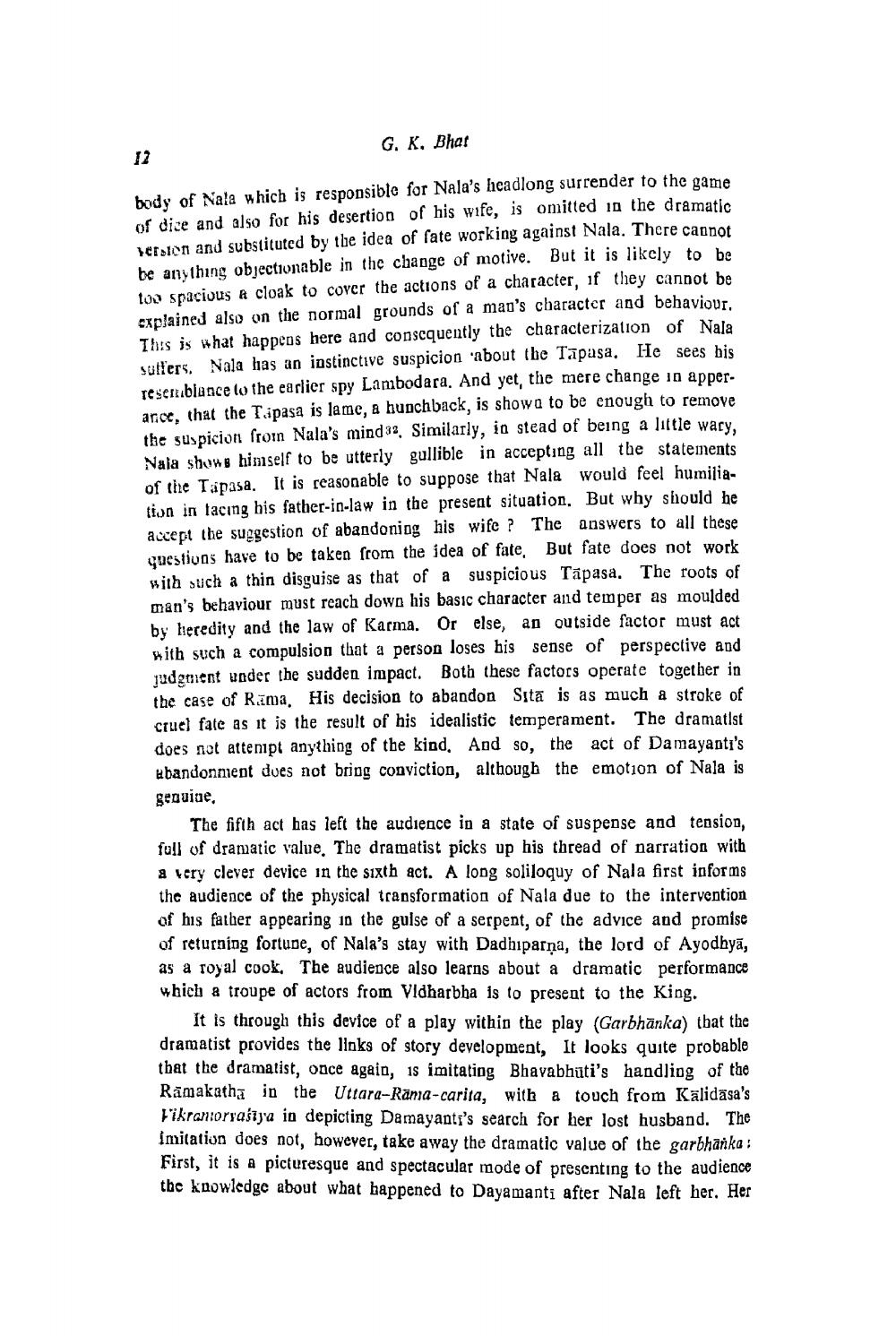________________
G. K. Bhar
body of Nala which is responsible for Nala's ficadlong surrender to the game of dice and also for his desertion of his wife, is omitted in the dramatic version and substituted by the idea of fate working against Nala. There cannot be anything objectionable in the change of motive. But it is likely to be to spacious & cloak to cover the actions of a character, if they cannot be explained also on the normal grounds of a man's character and behaviour. This is what happens here and conscquently the characterization of Nala suffers. Nala has an instinctive suspicion about the Tāpasa. He sees bis reserriblance to the earlier spy Lambodara. And yet, the mere change in apperarce, that the T.ipasa is lame, a hunchback, is shown to be enough to remove the suspicion froin Nala's mind 32. Similarly, in stead of being a little wacy. Nala shuns himself to be utterly gullible in accepting all the statements of the Tapasa. It is reasonable to suppose that Nala would feel humiliation in tacıng his father-in-law in the present situation. But why should be accept the suggestion of abandoning his wife ? The answers to all these questions have to be taken from the idea of fate. But fate does not work with such a thin disguise as that of a suspicious Tāpasa. The roots of man's behaviour must reach down his basic character and temper as moulded by heredity and the law of Karma. Or else, an outside factor must act with such a compulsion that a person loses his sense of perspective and judgment under the sudden impact. Both these factors operate together in the case of Rama. His decision to abandon Sita is as much a stroke of cruel fate as it is the result of his idealistic temperament. The dramatist does not attenipt anything of the kind. And so, the act of Damayanti's abandonment dues not bring conviction, although the emotion of Nala is gequige,
The fifth act has left the audience in a state of suspense and tension, full of dramatic value. The dramatist picks up his thread of narration with a very clever device in the sixth act. A long soliloquy of Nala first informs the audience of the physical transformation of Nala due to the intervention of his father appearing in the guise of a serpent, of the advice and promise of returning fortune, of Nala's stay with Dadhiparna, the lord of Ayodhyā, as a royal cook. The audience also learns about a dramatic performance which a troupe of actors from Vldharbha is to present to the King.
It is through this device of a play within the play (Garbhänka) that the dramatist provides the links of story development, It looks quite probable that the dramatist, once again, is imitating Bhavabhūti's handling of the Rāmakatha in the Uttara-Rama-carita, with a touch from Kalidasa's Vikramorrasīja in depicting Damayanti's search for her lost husband. The imitation does not, however, take away the dramatic value of the garbhanka: First, it is a picturesque and spectacular mode of presenting to the audience the knowledge about what happened to Dayamanti after Nala left her. Her




